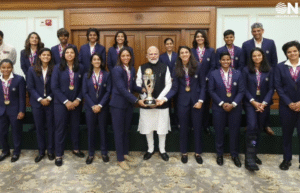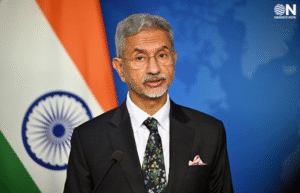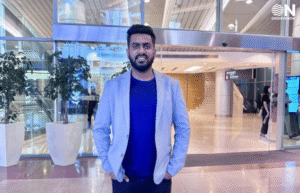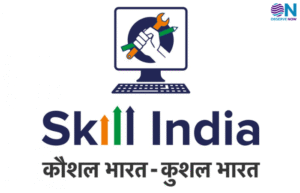Generative AI is quickly changing B2B marketing in India, automating and improving marketing subcategories like SEO, SEM, Social Media Management, Content creation, Graphic design, Video production, PRs, and Market-Trend analysis. Generative AI tools are, therefore, of great importance for Indian businesses as they try to grow and develop their marketing strategies while being data-driven and cost-effective. As highlighted by IDC, Generative AI (GenAI) has a significant impact on Indian enterprises, and the implications for this specifically to technology marketing leaders. The Indian AI market is expected to grow exponentially, surpassing the USD 5.9 billion mark by 2027, with a robust compound annual growth rate (CAGR) of 33.7% over five years.
SEO and SEM
Generative AI tools like MarketMuse, Clearscope, and Semrush AI Writing Assistant analyze search intent, identify high-performing keywords, and optimize content.
Other tools include Quillbot and CopyLeaks for AI Content Detection, VidIQ and Tube Magic for video SEO, Rapid Tas for Tag Generation and Keyword Tool for Keyword Research, and Semrush ContentShake AI, which creates high-ranking content. We leveraged AI-based tools like Google’s Lighthouse for performance, accessibility, and SEO insights.
According to Gartner, traditional search engine volume will drop 25% by 2026, and search marketing will lose market share to AI chatbots and other virtual voices.
“Organic and paid search are vital channels for tech marketers seeking to reach awareness and demand generation goals,” said Alan Antin, Vice President Analyst at Gartner. “Generative AI (GenAI) solutions are becoming substitute answer engines, replacing user queries that previously may have been executed in traditional search engines. This will force companies to rethink their marketing channels strategy as GenAI becomes more embedded across all aspects of the enterprise.”
It indicates a tectonic shift from Traditional SEO to GenAI SEO.
Social Media Management:
Generative AI tools for B2B Social Media Marketing boost content creation, audience-specific captions, timing optimization, sentiment analysis, and insights generation. This saves time, enhances efficiency, and improves marketing on platforms like LinkedIn and Twitter. Tools such as Hootsuite’s OwlyWriter AI, Sprout Social AI Assist, and Buffer AI streamline scheduling, analysis, and post creation.
Content Creation
GenAI allows B2B marketers to analyze content as data, uncover buying signals, and track engagement behavior, with personalization remaining at the top use case.
The most commonly used platforms for creating blogs, whitepapers, and newsletters are Jasper AI, ChatGPT, Gemini, Claude AI, and Writesonic. DeepSeek is an emerging tool with great potential. Tools like Adzooma and Copy.ai generate ad copy variations, and AIPRM helps craft effective prompts for better content and engagement with ChatGPT.
Graphics Design
GenAI enhances B2B graphic design by automating tasks, generating design concepts, iterating quickly, and providing insights for tailored visuals that help achieve marketing collateral more quickly. Tools such as Canva’s Magic Write, Figma AI, Adobe Firefly, DALL-E-2, Midjourney, and Sketch2Code make creating on-brand, high-quality visuals effortless.
Video Production
GenAI makes video creation easier by turning descriptions and scripts into videos using text prompts and automating visuals, music, and voice-overs to streamline production. Popular tools include InVideo, Pictory, Synthesia, Runway AI, and HeyGen, which easily create explainer videos, animated avatars, and full video sequences.
Public Relations (PR) and Articles
Generative AI improves the efficiency of PR work, drafting content, and managing crises through rapid, data-driven responses. This allows PR teams to be strategic. However, handling issues like misinformation remains an ethical concern. Tools like Wordsmith, INK, Narrato, and ChatGPT/Gemini can draft press releases, articles, and editorials.
Market Trends and Analytics
Generative AI tools such as HubSpot AI, Tableau AI, and Salesforce Einstein analyze market data and predict trends.
B2B events:
In 2025, GenAI will change the face of B2B events by simplifying planning, personalizing marketing, and enriching attendee experiences. AI tools can automatically create content, optimize agendas, and predict venue selection. AI-powered chatbots offer real-time support, while Bizzabo and Hopin help boost engagement through personalized recommendations. Marketing is enhanced through AI-generated materials and campaigns through tools like Jasper AI and HubSpot AI. After the event, AI analyzes feedback and measures ROI with platforms like Tableau AI and Zoho AI.
Future trends, such as involving hyper-personalized experiences using AI, Integration of Augmented Reality for immersive interaction, and the use of AI avatars in virtual environments, moments set the transformative agenda for B2B event management.
Efficiency uncovered:
Content creation at scale: GenAI delivers high-quality content across formats with streamlined workflows, from compelling ad copy and engaging social media posts to informative articles and persuasive email campaigns, freeing time for strategy.
Hyper-Personalization: GenAI analyses data to provide personalized content, product recommendations, product offers, and other related deals to B2B buyers.
Automated Marketing Process: GenAI automates repetitive tasks like lead generation, email marketing, and social media, allowing focus on strategy and nurturing relationships.
Cost optimization:
Lowering marketing expenses: Generative AI enables businesses to reduce marketing costs by optimizing resources and automating tasks significantly. This results in a high return on investment and increased profit overall.
Improved targeting: Generative AI algorithms can analyze vast datasets to identify leads with high potential and precisely target them. This minimizes resource waste and maximizes conversion rates.
The future of B2B marketing in India:
Though challenges to the technology will arise, for instance, through data privacy issues and AI experts’ requirements, Generative AI is the next significant cornerstone in B2B marketing in India. As it matures and increases adoption, more innovative applications will be visible.
Five pillars of the new marketing mix:
Data-driven decision-making: Gen AI will empower marketers to use data insights to make informed decisions, where campaigns are optimized for maximum impact.
Hyper-personalization: Providing tailored experiences that serve individual B2B buyers will be important for nurturing strong relationships and igniting conversions.
AI-powered automation: Automating recurring tasks will provide time to marketers to focus on strategic initiatives and problem-solving.
Content excellence: Gen AI will allow the production of high-quality, engaging content that grabs audience attention and drives results.
Ethical AI practices: Data privacy and use of responsible will be key to building trust and ensuring long-term success.
Conclusion
Gen AI is certainly not a trend but a new game-changer that will place B2B marketing in India in a dream world for the future. When embraced by businesses, transformative technology will open unprecedented efficiency, personalization, and cost optimization. As we progress, we will see Generative AI as one of the five pillars of successful marketing strategies in the Indian landscape.
Disclaimer: The views expressed in this article are solely those of the author and do not necessarily reflect the opinions or policies of ObserveNow Media. The author is solely responsible for ensuring the accuracy, completeness, and validity of the information presented, encouraging readers to independently verify and seek professional advice if needed.

























